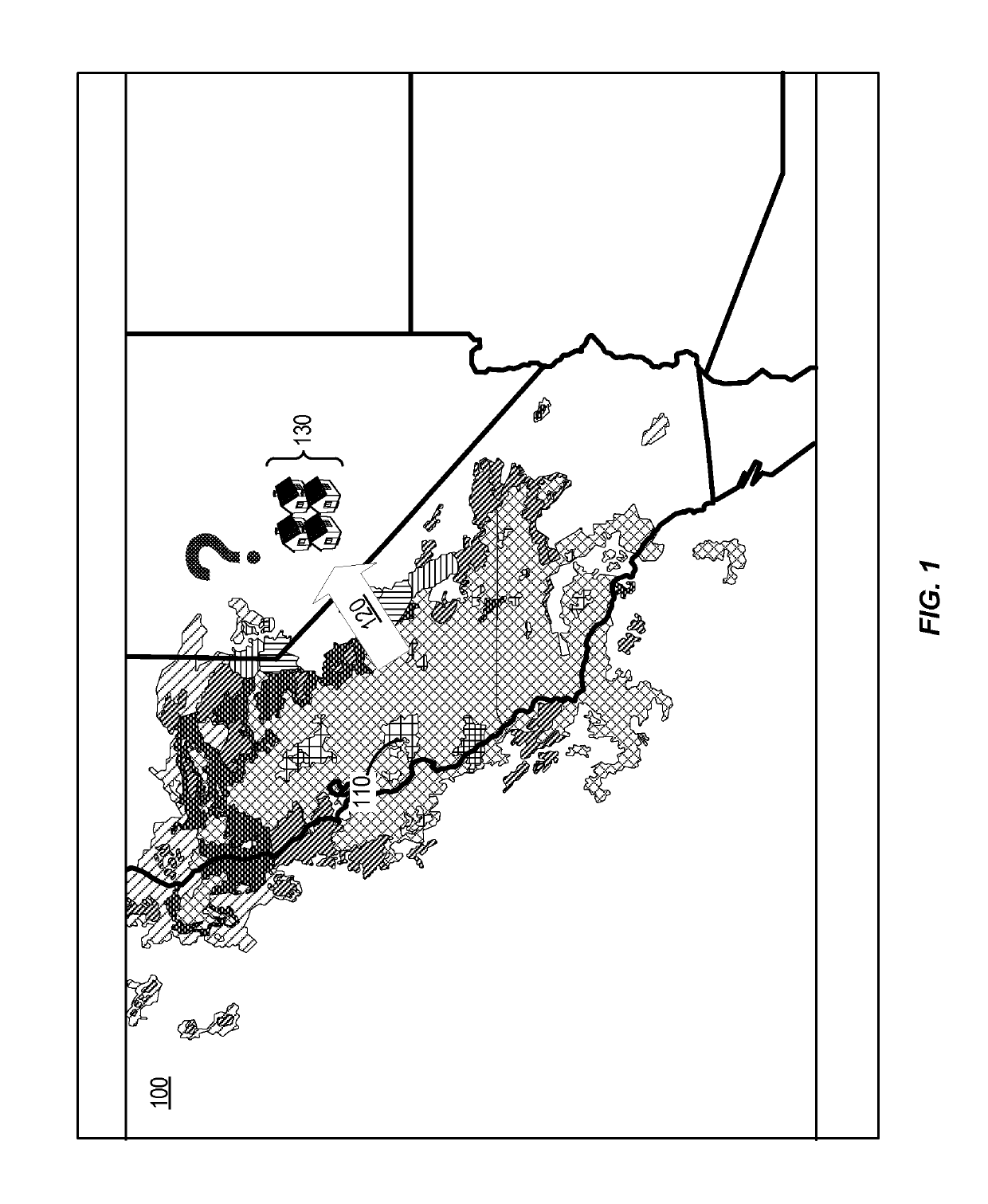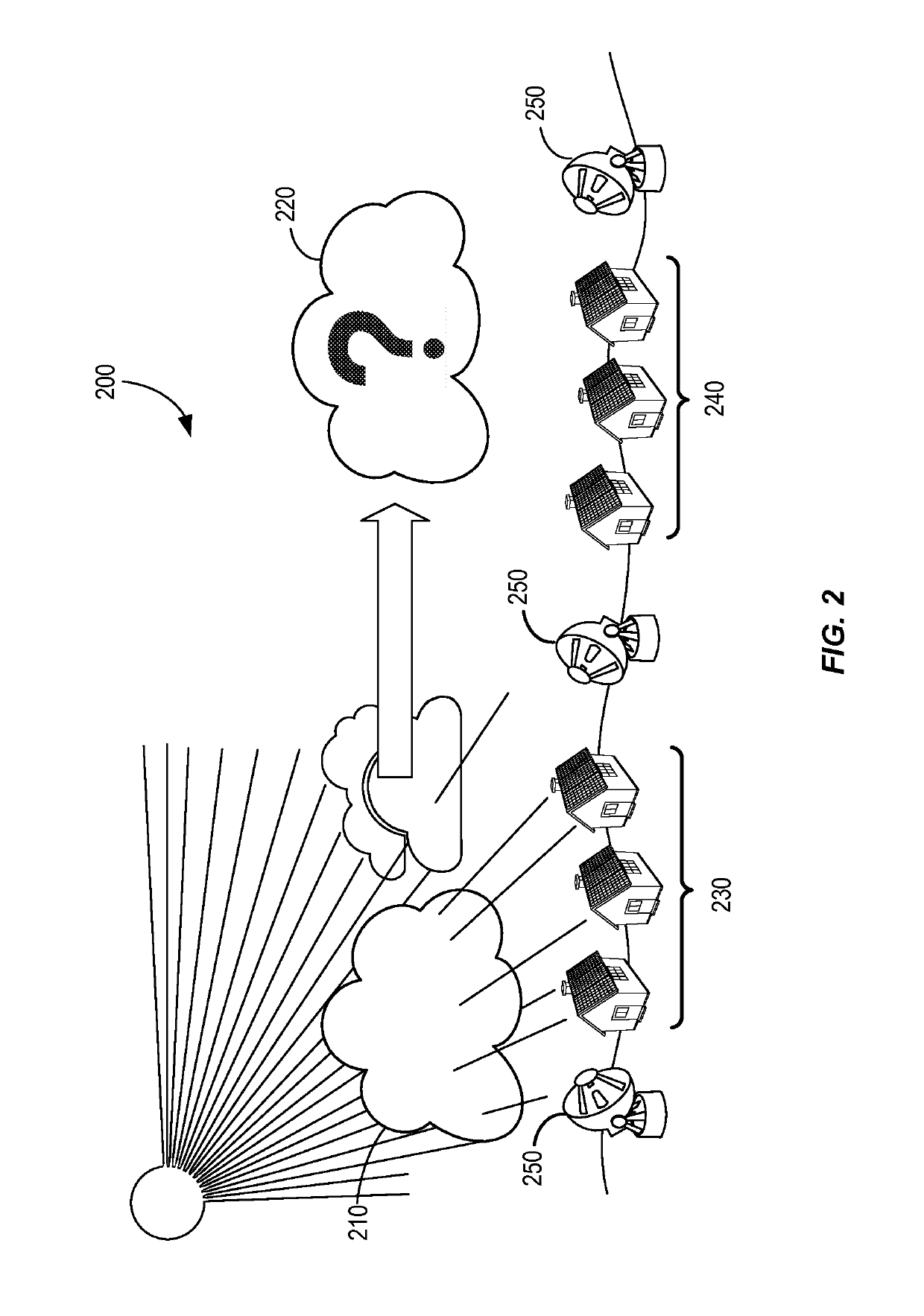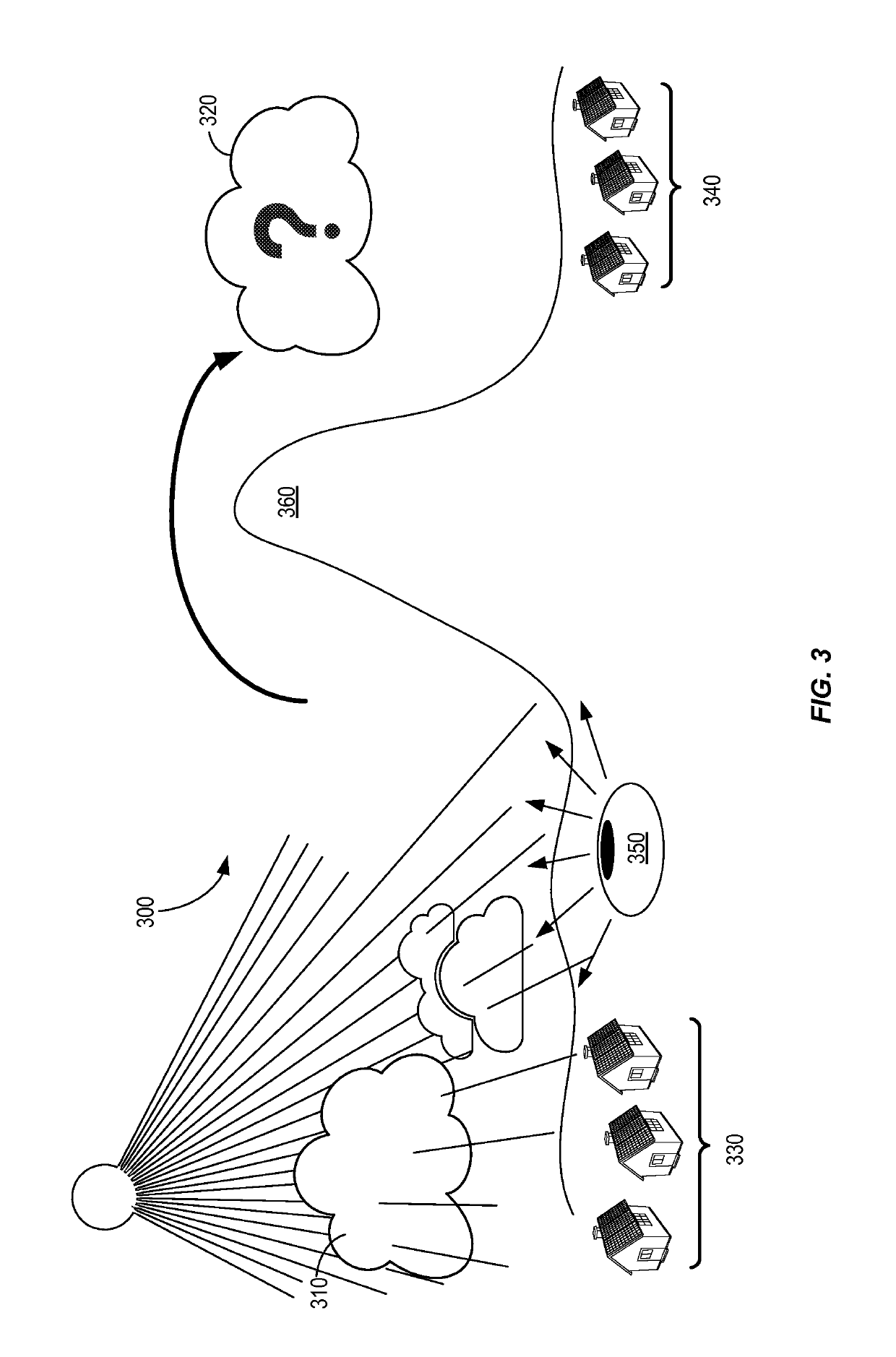Weather tracking in a photovoltaic energy generation system
a photovoltaic energy and generation system technology, applied in the field of weather tracking in photovoltaic energy generation systems, can solve the problems of inability to accurately predict storms for downstream eg sites, and inability to accurately predict storms. the effect of weather conditions
- Summary
- Abstract
- Description
- Claims
- Application Information
AI Technical Summary
Benefits of technology
Problems solved by technology
Method used
Image
Examples
an embodiment
[0053]FIG. 4 shows aspects of a weather tracking system 400 using aspects of one or more PV-based EG sites, according to certain embodiments. Weather tracking system 400 can be used to track and characterize a weather pattern 410 over a number of PV-based EG sites 430 and forecast its effects on downstream EG sites 440. A number of PV-based EG sites are shown in locations across the State of California, U.S.A. Each EG site depicted can represent 1 EG site, 10 EG sites, 1000 EG sites, or any suitable representation. Weather patterns 410, 420 can include one or more clouds (i.e., cloud cover) that can block an amount of sunlight from reaching certain EG sites.
[0054]Weather tracking system (“system”) 400 has significant advantages over all conventional systems, including aspects of those shown in FIG. 1-3. System 400 utilizes the hardware and infrastructure in existing EG sites to perform the weather tracking operations. Thus, system 400 has virtually unlimited scalability with little ...
PUM
 Login to View More
Login to View More Abstract
Description
Claims
Application Information
 Login to View More
Login to View More - R&D
- Intellectual Property
- Life Sciences
- Materials
- Tech Scout
- Unparalleled Data Quality
- Higher Quality Content
- 60% Fewer Hallucinations
Browse by: Latest US Patents, China's latest patents, Technical Efficacy Thesaurus, Application Domain, Technology Topic, Popular Technical Reports.
© 2025 PatSnap. All rights reserved.Legal|Privacy policy|Modern Slavery Act Transparency Statement|Sitemap|About US| Contact US: help@patsnap.com



